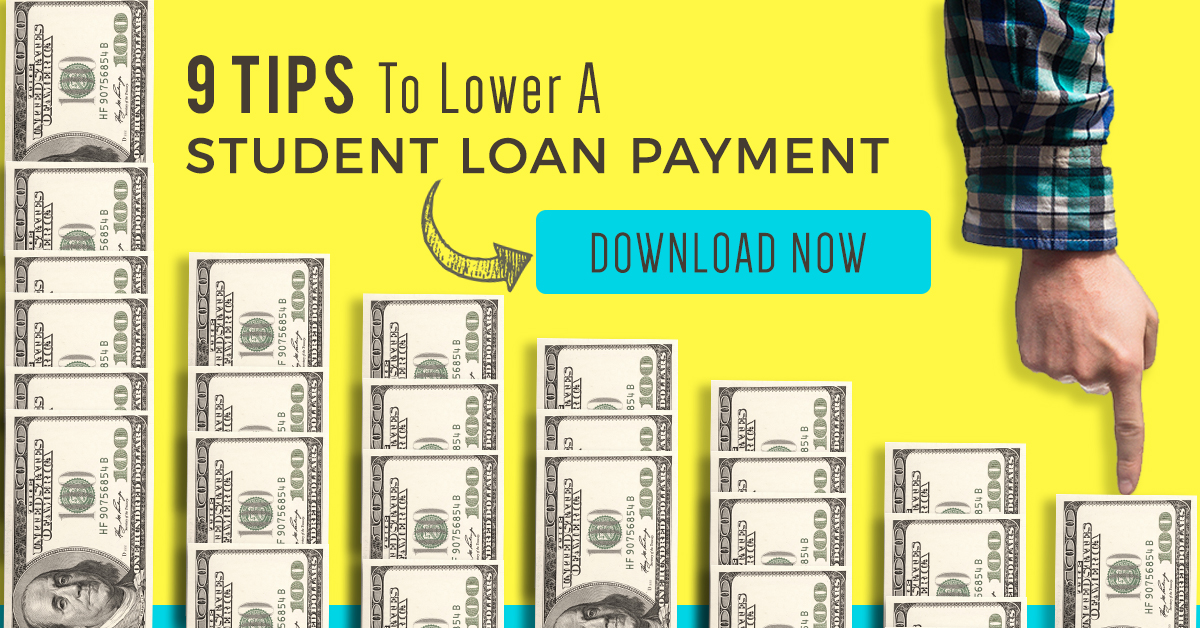The Department of Education offers a variety of student loan repayment plans that assist student loan borrowers with their unique financial situation. These repayment plans originated from the passing of the Health Care and Education Reconciliation Act of 2010.
As part of the act, the Department of Education now offers a variety of student loan repayment plans that assist student loan borrowers with their unique financial situation.
The Pay As You Earn Plan (PAYE) is a repayment plan that falls under Income Driven Repayment Plans.
The Pay As You Earn definition specifically can help student loan borrowers get a more affordable monthly loan payment based on
1) Income
2) Family Size
The passing of the PAYE Plan helped lower the cap of some student loan bills from 15% to 10% of the borrower’s discretionary income.
That means you’re only required to pay at most 10% of your discretionary income.
Student loan borrowers entering the Pay As You Earn student loan program will have access to the following benefits:
- A student loan payment that is based off of their income and the size of their family
- A student loan payment that will never exceed 10% of the loan borrowers discretionary income
- The possibility of having a student loan payment of $0.00
- The borrower doesn’t have to pay any interest not covered by the borrower’s monthly payments for the first three years in the repayment plan
- The possibility of having the remainder of their student loan balance forgiven after 20 years of consecutive payments
What types of loans are eligible for the Pay As You Earn Plan?
Student loan borrowers that have loans made under the Direct Loan Program or the FFEL Program are eligible for the Pay As You Earn Plan.
Loans eligible for the Pay As You Earn Plan include:
- Direct Subsidized Loans
- Direct Unsubsidized Loans
- Direct PLUS Loans made to graduate or professional students
- Direct Consolidation Loans that don’t include repaying Plus loans made to parents
- Subsidized Federal Stafford Loans (made under the FFEL Program)
- Unsubsidized Federal Stafford Loans (made under the FFEL program)
- FFEL PLUS Loans for graduate and professional students
- FFEL Consolidation Loans that didn’t repay any PLUS loans made to parents
- Federal Perkins Loans (*if they are consolidated)
Who is the PAYE for?
A student loan borrower can benefit from the income based repayment if they meet the criteria below:
- Student loan borrowers that possess the eligible loans listed above
- Student loan borrowers that struggle to make their full student loan payment each month
- Anyone with a low income compared to their student loan debt
- Your current monthly student loan payment is more than 10% of your income
- Direct Loan borrowers can qualify for the PAYE Plan
- Loan borrowers that are considered to have a partial financial hardship
(Did you know? One of the biggest reasons borrowers fall behind on their monthly payments is because they cannot afford the high monthly payments their servicers are requiring them to pay. But there are several ways to lower your student loan payment to make it more affordable. Here are 9 ways to lower a student loan payment. Click here to learn more and get the free guide.)
Who is the PAYE not for?
This plan may sound like a great idea for anyone looking to lower their monthly student loan payment.
However, not all student loan borrowers are eligible to enter an PAYE Plan.
Here are some factors required:
- Student loan borrowers that have a high income and low family size
- Your current monthly payment does not exceed 10% of your income
- Anyone that can comfortably make their current Standard monthly payment
- Anyone that doesn’t want to make student loan payments for the next 20 years
- Student loan borrowers that have Parent Plus loans
- Student loan borrowers that are not considered to have a partial financial hardship
Am I eligible for the PAYE Plan?
It’s important to remember that every loan borrower’s situation is different and not everyone will qualify for the Pay As You Earn plan. However, most student loan borrowers meet eligibility requirements if the amount of student loan debt is higher than their discretionary income.
Here are the eligibility requirements for an PAYE Plan:
- You have no outstanding student loan balance before October 1, 2007
- You have received one of the following student loans since October 1, 2011: Direct Subsidized, Direct Unsubsidized, Direct PLUS Loan or a Direct Consolidation Loan
- Your PAYE Plan monthly payment must be less than the 10 – year Standard Repayment Plan monthly payment.
- You must be considered to have a partial financial hardship to be eligible for an income driven repayment plan
How long will I be in the PAYE Plan?
Upon acceptance of your pay as you earn application, the repayment period for the PAYE Plan is 20 years. After you make the required 240 monthly payments, the remainder of your student loan balance will be forgiven.
Remember: If you’re expecting to get the remaining loan balance forgiven at the end of the repayment plan, you must make the consecutive payments every month during the repayment plan.
That’s right.
You cannot miss a payment and the payments must be on time. You will need to make 200 payments to qualify for Student Loan Forgiveness at the end of your repayment program.
If you do enter a PAYE Plan and decide it’s not the right plan for you, you can choose to take yourself out of the plan. Once you take yourself out of the plan, you can place yourself into any repayment plan that you’re eligible for.
Is the payment the same each month?
The payment you start off with in an PAYE plan will last 12 months or until it is time for you to apply for recertification. Income driven repayment plans require student loan borrowers to recertify their status in the program every year.
Recertification is an annual process of the income driven repayment plans that cannot be skipped. You must recertify each year to get back into the same PAYE Plan. If you forget to do the recertification process, you get placed back into a Standard Repayment Program.
After you re-certify each year, your monthly payment can change. Your payment can increase, decrease, or stay the same. It all depends on where you stand financially.
Here are some factors that can change your monthly payment:
- You made more money on the last tax returned you filed
- You made less money/ lost your job
- You got married and filed taxes jointly
- You recently had a baby or gained a dependent that receives more than half of their support from you
Which income driven repayment plan is the best for me?
While there are four income driven repayment plans, not all income driven plans are built for everyone. Depending on your unique financial situation, there might only be one repayment plan that makes sense for you.
Sometimes borrowers qualify for multiple income driven repayment plans and can’t decide which one makes the most sense.
Need help with that? Give us a call.
(Did you know? One of the biggest reasons borrowers fall behind on their monthly payments is because they cannot afford the high monthly payments their servicers are requiring them to pay. But there are several ways to lower your student loan payment to make it more affordable. Here are 9 ways to lower a student loan payment. Click here to learn more and get the free guide.)
What factors come into play with the PAYE
Your eligibility for the program is calculated based on the following factors:
- Your income – if you’re married and file taxes jointly, your spouse’s income is combined with your income
- Family size – this number includes you, your spouse (*if you are legally married) and the number of children or people that live with you and receive more than half of their support from you.
- Current Student Loan Payment – your newly calculated PAYE Plan monthly payment needs to be lower than your current Standard payment
- Type of loans – the PAYE Plan is available to borrowers with eligible loans made under the Direct Loan Program (eligible loans are listed above)
What other options are there for me to repay my student loans?
The Department of Education offers a variety of student loan repayment programs to assist student loan borrowers with different financial situations.
There are four income driven repayment plans:
- Income Based Repayment Plan
- Income-Contingent Repayment Plan
- Pay As You Earn Repayment Plan
- Pay As Your Earn Revised Repayment Plan
There are four standard payment plans:


This is a website that needs recommendation, thank you very much